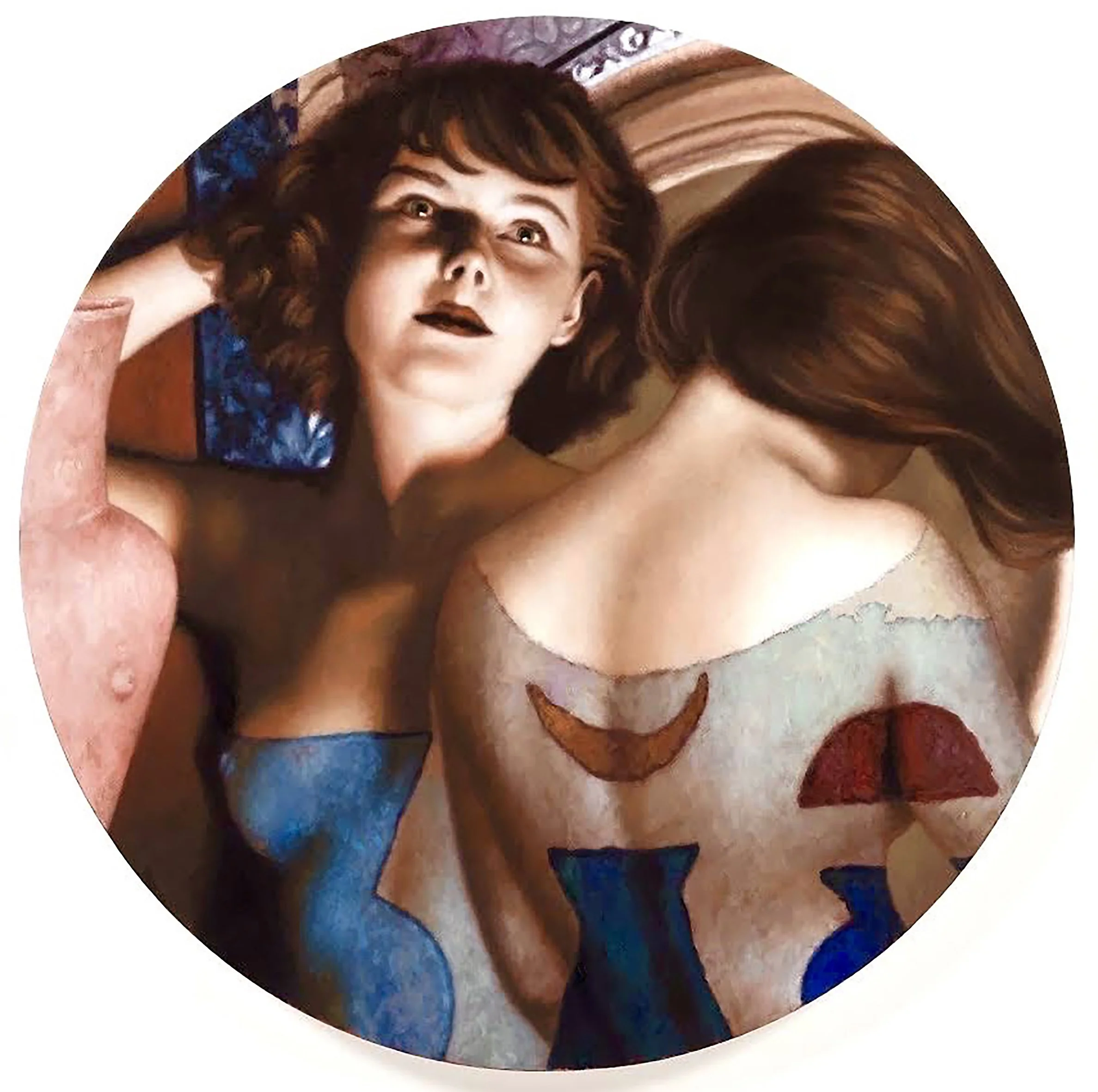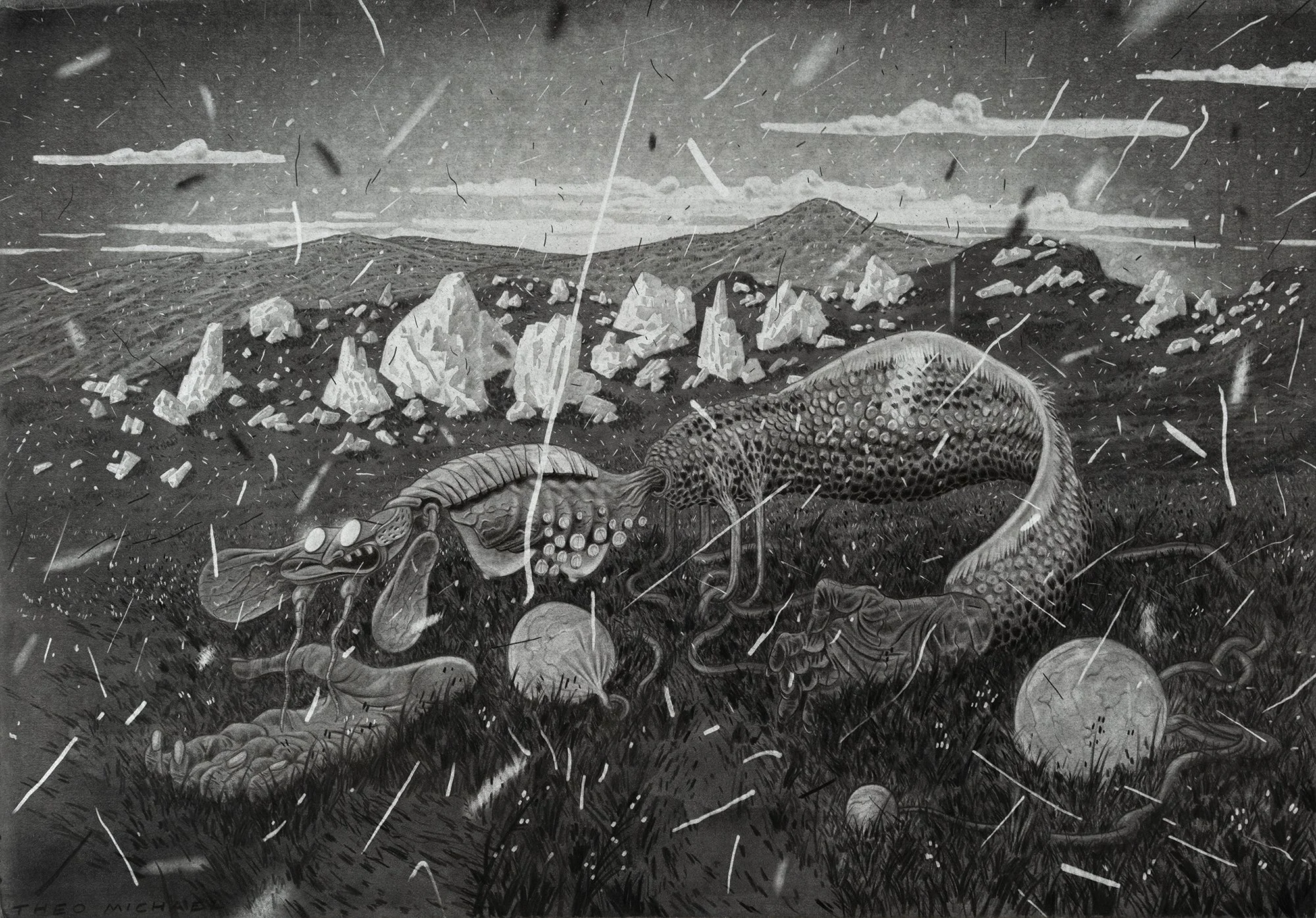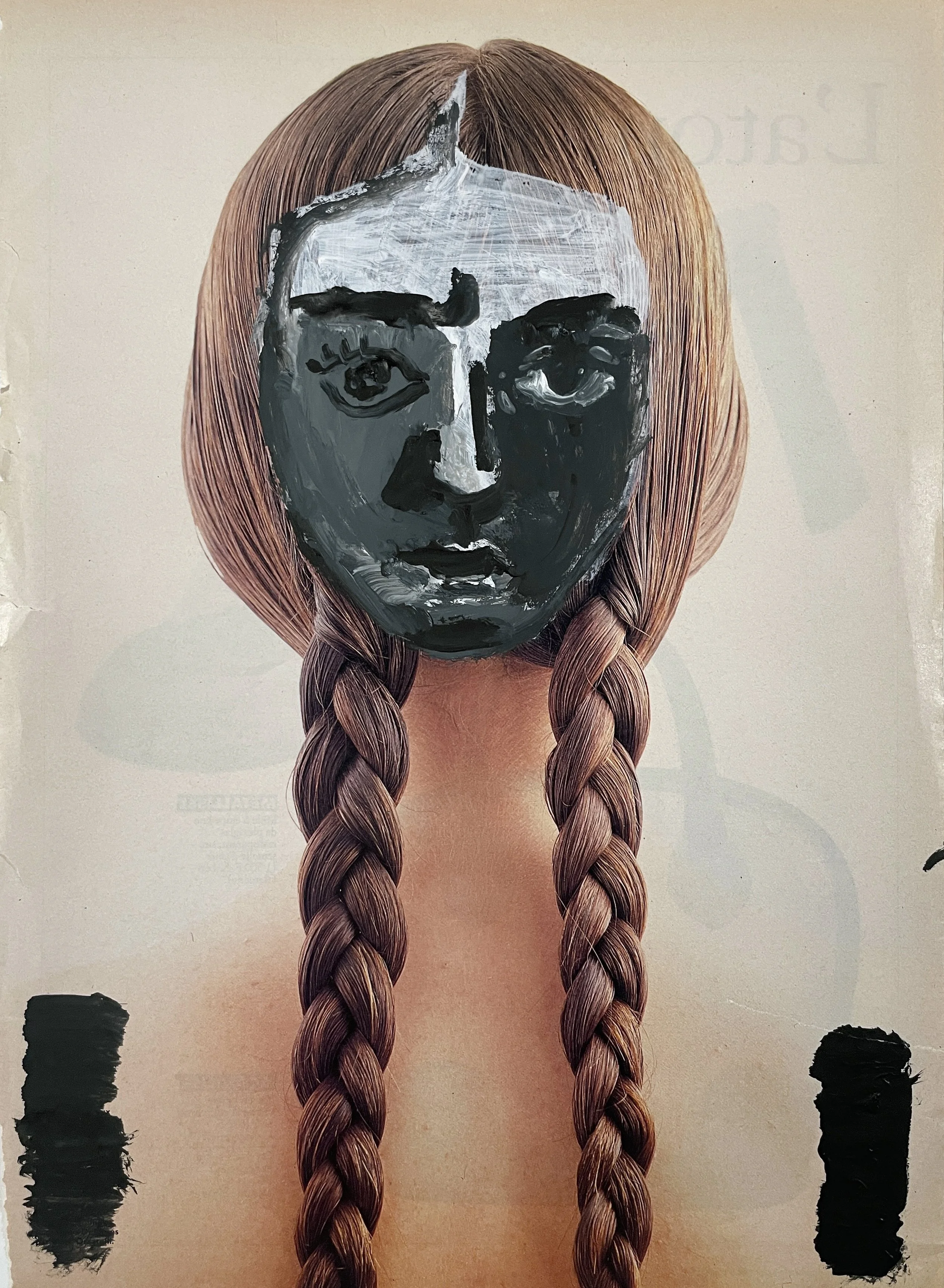Blackbird Rook and General Assembly are pleased to present In Dialogue, an exhibition ; that brings the work of Marilyn Hallam (b.1947) into dialogue with Ellie MacGarry (b.1991). Across generations, both artists explore the architecture of interior life - through doorways, mirrors, windows, fabric, and the quiet gestures of domestic space.
What Remains of the Day: Notes from a Near-Spectator
A show that spans forty years shouldn’t feel contemporary in every direction at once, yet What Remains of the Day does exactly that. In pairing Marilyn Hallam and Ellie MacGarry, the exhibition opens up a conversation about how painters organise attention, how interiors become states of mind, and why the language of modernism keeps resurfacing when we think we’ve left it behind. This is a quiet show, but it has a long reach.
Interiors, Prints, and the Art of Buying Well
Jeff Dellow: Extended Fields
Now Showing: Fiona Finnegan & Soft Grip
Anatomia Humana II
Anatomia Humana II
Curated by Irini Karayannopoulou
July 10th - September 14th
Alexios Tjoyas. Alison Blickle. Alison Jones. Andreas Vais. Angeliki Stamatakou. Antonakis Christodoulou. Damien Deroubaix. Eleanna Horiti. Efstathios-Alexandros. Zoulias. Helen Flockhart. Irini Karayannopoulou. Kasia Kay. Loukia Alavanou. Marianna Hatzinikolaou. Matt Morris. Nicholas Zirk. Peggy Kouroumalos. Sharon Kivland. Sofia Kouloukouri. Theo Michael. Zoe Xenaki
Alison Blickle, Cult of Artemis, 2019
The body opens again. A second cut, a deeper layer. Anatomia Humana – Part II continues the exploration of what it means to inhabit a human form. The surface gives way to sediment: rituals, desires, and systems encoded beneath the skin.
If the body was ever a map, it was always incomplete. The need for continuation arises from the impossibility of conclusion. To be human is to unfold—layer upon layer, nerve after nerve, spell entangled with tissue.
This exhibition extends the anatomical hunt with the soft, radical curiosity of the witch, the poet, the philosopher, and the artist. What remained dormant in Part I begins to stir: the secret organs of collective memory, the haunted chambers of violence, the energies of the feminine occult.
Theo Michael, Humans Whatever, 2023
Where Plato sought the soul in symmetry, we trace it in rupture—in rituals forgotten by history but carried still in bone. Whitman sang of multitudes. This is their echo: politicized, eroticized, reborn in clay, pigment, paper, photographic image, and finally, flesh.
The works gathered in Anatomia Humana – Part II open the human soul as a porous anatomy—leaky and excessive. A body in dialogue with its shadows and doubts. A psyche hosting hauntings: personal, historical, planetary.
To extend is to allow for deviation. This exhibition welcomes that deviance. It becomes a site of psychic excavation and erotic knowledge, a cartography of wounds and wonders. The body as vessel begins to overflow. The act of looking inward becomes an act of revolt. To study the human now is to engage the systems that name, control, and obscure it.
Anatomia Humana – Part II offers a political anatomy, a sensual one, a mystical one. It listens to the body as a terrain, ripe with symbols, codes, and screams.
Irini Karayannopoulou, The Ritual, 2014
The Curator - Irini Karayannopoulou
Irini Karayannopoulou is an artist, curator, and filmmaker whose multidisciplinary practice spans painting, moving image, and publishing. She is the founder and editor of Janus femzine, a publication dedicated to erotica and feminism. As one half of the filmmaking duo Twin Automat, she co-directs experimental films and visual essays that blur the boundaries between fiction, documentary, and animation. Karayannopoulou has exhibited widely, with presentations at MoMA Warsaw, Polana Institute, DESTE Foundation, MOMus Museums, Fondazione Re Rebaudengo, Hydra Book Club, Nosbaum Reding, State of Concept, PCAI, Istanbul '74, Antonopoulou gallery and Mona Athens. She has recently curated Magic Mirror in Hydra island and Anatomia Humana I & II, both presented by Blackbird Rook. She lives and works in Athens.
Magpie’s Eye - curated by Laura Bygrave and Alex Crocker
MAGPIE’S EYE
LAURA BYGRAVE. COLOUR BLIND PAINTING WORKSHOP.
ALEX CROCKER. GRANT FOSTER. DIDO HALLETT.
ADAM HOLMES-DAVIES. PAUL HOUSLEY. MOLLY MARTIN.
TAHMINA NEGMAT. LAURA WORMELL.
Curated by Laura Bygrave and Alex Crocker
Grant Foster, Dissolved in a Pitiful Little Heap of Secrets
Blackbird Rook presents
at the TCHC Viewing Room
Omega Business Park, Alton, Hampshire GU34 3YU
Viewing by appointment
“For both of us, early encounters with art came from massive compendiums like The Art Book and The World of Art - long before the internet and formal art education. In these books, the story of art was fragmented, often organised alphabetically rather than chronologically. This arrangement led to sudden shifts in mood and style, as well as surprising pairings: Kirchner next to Krasner, or Hesse next to Hawkins, rather than dictated by a traditional canon.
It was in that purely image-driven, nonlinear space that our fascination with painting began, for painting that emphasises materiality and touch, It felt like a shopping list of painting possibilities. We weren't looking for academic approval or coherent movements, we were looking for texture, gesture, the thrill of paint doing something unexpected. That early experience shaped the way we both approach painting now: as something intuitive and tactile, where ideas often come second to process, and meaning emerges through the act of making. There's a pleasure in that materiality, and in the risk that painting always carries: the risk of collapse, of excess, of the image dissolving just as it begins to cohere.
What unites this group is a shared attentiveness: a magpie's eye for the glinting fragment, the accidental beauty, the small detail that transforms the whole. Their paintings feel as if they've been built piece by piece, like dry stone walls, imperfect but enduring, with the occasional modernist brick nudged into place. These are artists who aren't afraid to show the seams, to let the construction show, and to allow fragility to sit alongside intention. The story their work tells isn't linear or complete - but neither were those books that first opened our eyes.”
Laura Bygrave and Alex Crocker
Blackbird Rook during London Gallery Weekend
Lit from Within, Worn at the Edges - The Diary of an Art Advisor
That’s the tension I’m interested in – and maybe the space Blackbird Rook can help occupy. A place where artists and collectors aren’t just flung at each other with a price tag attached, but where there’s context, trust, and real dialogue. Where advice isn’t patronising, and enthusiasm isn’t cynical. Where someone helps you find your footing, whichever side of the equation you’re on.











